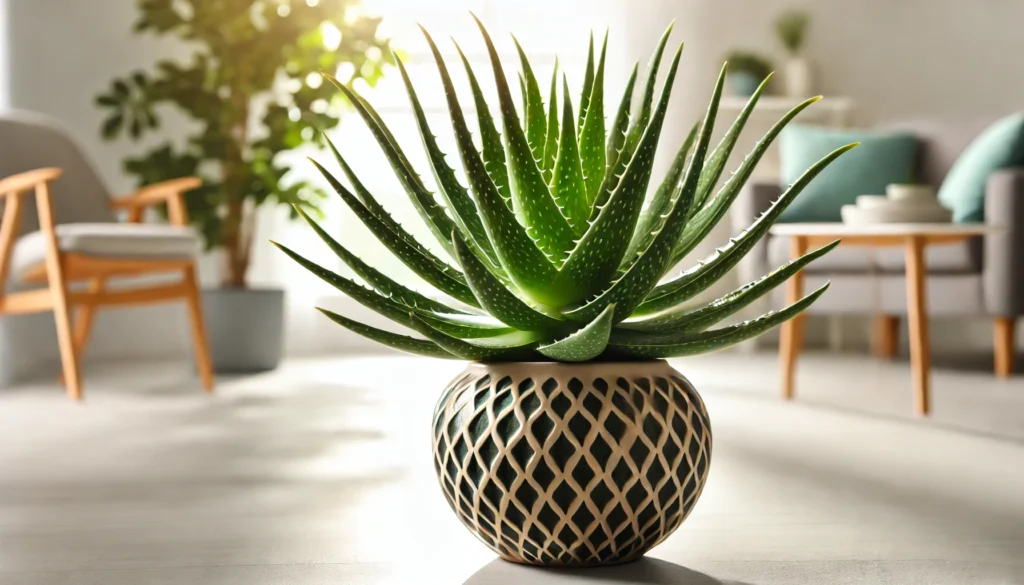
The Dieffenbachia, commonly known as Dumb Cane, is a popular houseplant known for its striking foliage and easy-care nature. This tropical plant features large, broad leaves with unique variegated patterns of green, white, and yellow. Typically, Dieffenbachias can grow up to 5 feet tall indoors, making them a substantial and attractive addition to any room.
A Rich History and Ideal Growing Conditions
Native to the tropical regions of Central and South America, Dieffenbachias have been cherished for their ornamental value and resilience. They have become a staple in homes and offices due to their adaptability and low maintenance requirements. Dieffenbachias thrive in warm, humid environments that mimic their natural habitat. They grow best in bright, indirect light but can tolerate lower light conditions, making them versatile for various indoor settings.
Dieffenbachia and Pets: Important Information
While Dieffenbachias are beautiful and easy to care for, it is important to note that they are toxic to pets. If ingested by cats or dogs, they can cause oral irritation, drooling, and difficulty swallowing. To keep your furry friends safe, ensure that your Dieffenbachia is placed out of their reach.
Best Practices for Caring for Your Dieffenbachia
Caring for a Dieffenbachia is relatively straightforward, making it a great choice for both novice and experienced plant enthusiasts.
Watering and Humidity
Dieffenbachias prefer consistently moist soil but do not like to sit in water. Water the plant thoroughly when the top inch of soil feels dry, and ensure that excess water drains out of the pot to prevent root rot. In general, watering once a week is a good starting point, but you may need to adjust based on your specific environment. These plants appreciate higher humidity levels. If your home is dry, consider using a humidifier or misting the leaves regularly to increase humidity around the plant.
Soil, Light, and Temperature
A well-draining potting mix is essential for Dieffenbachias. They grow best in bright, indirect light but can also tolerate lower light conditions. Place your plant near a window where it can receive plenty of light, but avoid direct sunlight, which can scorch the leaves. Dieffenbachias prefer temperatures between 65°F and 75°F. They are relatively hardy but should be protected from cold drafts and sudden temperature changes.
Common Problems and Remedies
Even with the best care, Dieffenbachias can encounter some common issues. Yellowing leaves can be a sign of overwatering or poor drainage. To remedy this, ensure the soil is well-draining and adjust your watering schedule accordingly. Brown leaf tips can be caused by dry air or inconsistent watering. Increasing humidity around the plant and maintaining a regular watering schedule can help prevent this issue.
Dieffenbachias can also be affected by pests such as spider mites, aphids, and scale. To combat these pests, use a water and mild soap solution or neem oil spray. Regularly inspecting your plant and wiping down the leaves can help prevent pest infestations.
Propagation and Benefits
Propagating Dieffenbachias is relatively easy and can be done through stem cuttings. Cut a healthy stem and place it in water or moist soil to root. This method is not only easy but also a great way to expand your collection or share plants with friends.
Dieffenbachias are not only beautiful but also beneficial to your indoor environment. They are known for their air-purifying qualities, helping to remove toxins such as formaldehyde and benzene from the air.
Final Thoughts
Dieffenbachias are one of the most attractive and easy-to-care-for houseplants you can find. Their striking variegated leaves and adaptability make them a favorite among plant enthusiasts and interior designers alike. While they do require some attention to thrive, the rewards are well worth the effort. With the right care, your Dieffenbachia can become a stunning focal point in your home. So why not add a Dieffenbachia to your collection and enjoy the beauty and benefits it brings?



